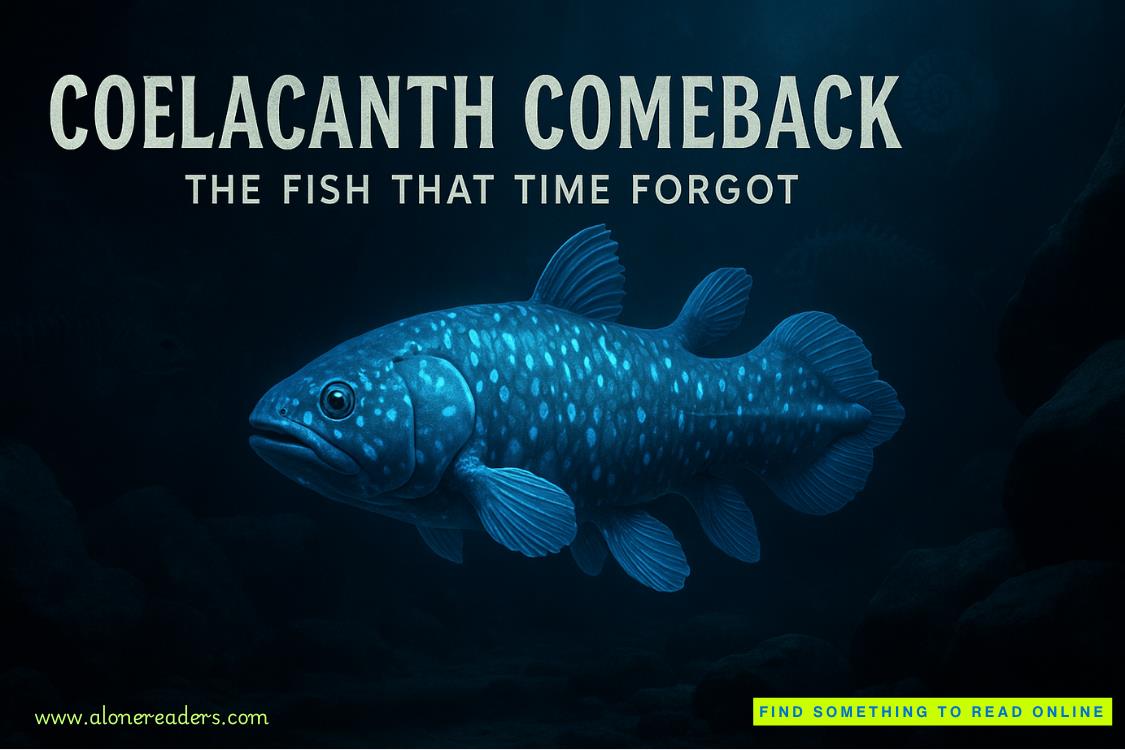Page 19 of My Ishmael (Ishmael 3)
“How do you know that?”
“First, because Homo forager did not become extinct—and is still not extinct. And second, because foragers and farmers don’t belong to different species at all. They’re biologically indistinguishable. The difference between them is strictly cultural. Bring a forager’s baby up among farmers and he’ll be a farmer. Bring a farmer’s baby up among foragers and he’ll be a forager.”
“Okay. But even so, it was like … I don’t know. It was like the band struck up a new tune and everyone started dancing to it all over the world.”
Ishmael nodded and said, “I know this is how it sounds, Julie. Your history books have reduced it to a very simple story indeed. In fact, it’s an extremely dense and complex story—and one that everyone in your culture vitally needs to know. Your future doesn’t depend on understanding the fall of Rome or the rise of Napoleon or the American Civil War or even the World Wars. Your future does depend on understanding how you came to be the way you are, and this is the story I’m trying to reveal to you.”
Ishmael stopped and went glassy-eyed for about ten minutes. Finally he scowled and shook his head, and I asked what was wrong.
“I was trying to think of a way to make the story comprehensible to you in a single telling, Julie, but I don’t think it can be done that way. It has to be presented in several different tellings, each telling designed to bring out a different set of themes. Does that make any sense to you?”
“No, not much, to be honest. But I’m certainly willing to listen.”
“Good. Here’s a telling of the story based on your metaphor of the tune and the dancers. Although it may sound fanciful, it’s not nearly as fanciful as the story told in your textbooks, which is about as useful, historically speaking, as the tales of Mother Goose.”
Tunes and Dancers
Terpsichore is among the places you would enjoy visiting in the universe (Ishmael said). This was a planet (named, by the way, after the muse of dancing) where people emerged in the usual way in the community of life. For a time they lived as all others live, simply eating whatever came to hand. But after a couple of million years of living in this way, they noticed it was very easy to promote the regrowth of their favorite foods. You might say they found a few easy steps that would have this result. They didn’t have to take these steps in order to stay alive, but if they took them, their favorite foods were always more readily available. These were, of course, the steps of a dance.
A few steps of the dance, performed just three or four days a month, enriched their lives greatly and took almost no effort. As here on earth, the people of this planet were not a single people but many peoples, and as time went on, each people developed its own approach to the dance. Some continued to dance just a few steps three or four days a month. Others found it made sense for them to have even more of their favorite foods, so they danced a few steps every second or third day. Still others saw no reason why they shouldn’t live mostly on their favorite foods, so they danced a few steps every single day. Things went on this way for tens of thousands of years among the people of this planet, who thought of themselves as living in the hands of the gods and leaving everything to them. For this reason, they called themselves Leavers.
But one group of Leavers eventually said to themselves, “Why should we just live partially on the foods we favor? Why don’t we live entirely on the foods we favor? All we have to do is devote a lot more time to dancing.” So this one particular group took to dancing several hours a day. Because they thought of themselves as taking their welfare into their own hands, we’ll call them Takers. The results were spectacular. The Takers were inundated with their favorite foods. A manager class soon emerged to look after the accumulation and storage of surpluses—something that had never been necessary when everyone was just dancing a few hours a week. The members of this manager class were far too busy to do any dancing themselves, and since their work was so critical, they soon came to be regarded as social and political leaders. But after a few years these leaders of the Takers began to notice that food production was dropping, and they went out to see what was going wrong. What they found was that the dancers were slacking off. They weren’t dancing several hours a day, they were dancing only an hour or two and sometimes not even that much. The
leaders asked why.
“What’s the point of all this dancing?” the dancers said. “It isn’t necessary to dance seven or eight hours a day to get the food we need. There’s plenty of food even if we just dance an hour a day. We’re never hungry. So why shouldn’t we relax and take life easy, the way we used to do?”
The leaders saw things very differently, of course. If the dancers went back to living the way they used to, then the leaders would soon have to do the same, and that didn’t appeal to them at all. They considered and tried many different schemes to encourage or cajole or tempt or shame or force the dancers into dancing longer hours, but nothing worked until one of them came up with the idea of locking up the food.
“What good will that do?” he was asked.
“The reason the dancers aren’t dancing right now is that they just have to reach out and take the food they want. If we lock it away, they won’t be able to do that.”
“But if we lock the food away, the dancers will starve to death!”
“No, no, you don’t understand,” the other said with a smile. “We’ll link dancing to receiving food—so much food for so much dancing. So if the dancers dance a little, they’ll get a little food, and if they dance a lot, they’ll get a lot. This way, slackers will always be hungry, and dancers who dance for long hours will have full stomachs.”
“They’ll never put up with such an arrangement,” he was told.
“They’ll have no choice. We’ll lock the food away in storehouses, and the dancers will either dance or they’ll starve.”
“The dancers will just break into the storehouses.”
“We’ll recruit guards from among the dancers. We’ll excuse them from dancing and have them guard the storehouses instead. We’ll pay them the same way we pay the dancers, with food—so much food for so many hours of guarding.”
“It will never work,” he was told.
But oddly enough it did work. It worked even better than before, for now, with the food under lock and key, there were always plenty of dancers willing to dance, and many were glad to be allowed to dance ten hours, twelve hours, even fourteen hours every single day.
Putting the food under lock and key had other consequences as well. For example, in the past, ordinary baskets had been good enough to hold the surplus food being produced. But these proved to be too flimsy for the huge surpluses now being produced. Potters had to take over for basket-makers, and they had to learn how to make bigger pots than ever before, which meant building larger and more efficient kilns. And because not all dancers took kindly to the idea of food being locked away, the guards had to be equipped with better weapons than before, which meant that toolmakers began looking at new materials to replace the stone weapons of the past—copper, bronze, and so on. As metals became available for use in weapons, other artisans found uses for them. Each new craft gave birth to others.
But forcing the dancers to dance for ten or twelve hours a day had an even more important consequence. Population growth is inherently a function of food availability. If you increase the food available to any population of any species, that population will grow—provided it has space into which to grow. And of course the Takers had plenty of space into which to grow—their neighbors’ space.
They were perfectly willing to grow peacefully into their neighbors’ space. They said to the Leavers around them, “Look, why don’t you start dancing the way we do? Look at how far we’ve come dancing this way. We have things you can’t even dream of having. The way you dance is terribly inefficient and unproductive. The way we dance is the way people were meant to dance. So let us move into your territory, and we’ll show you how it’s done.”
Some of the folks around them thought this sounded like a good idea, and they embraced the Taker way. But others said, “We’re doing fine the way we are. We dance a few hours a week, and that’s all we care to dance. We think you’re crazy to knock yourselves out dancing fifty and sixty hours a week, but that’s your business. If you like it, you do it. But we’re not going to do it.”
The Takers expanded around the holdouts and eventually isolated them. One of these holdout peoples were the Singe, who were used to dancing a couple hours a day to produce the foods they favored. At first they lived as before. But then their children began to be jealous of the things Taker children had, and they started offering to dance a few hours a day for the Takers and to help guard the food storehouses. After a few generations the Singe were completely assimilated into the Taker lifestyle and forgot that they had ever been the Singe.















